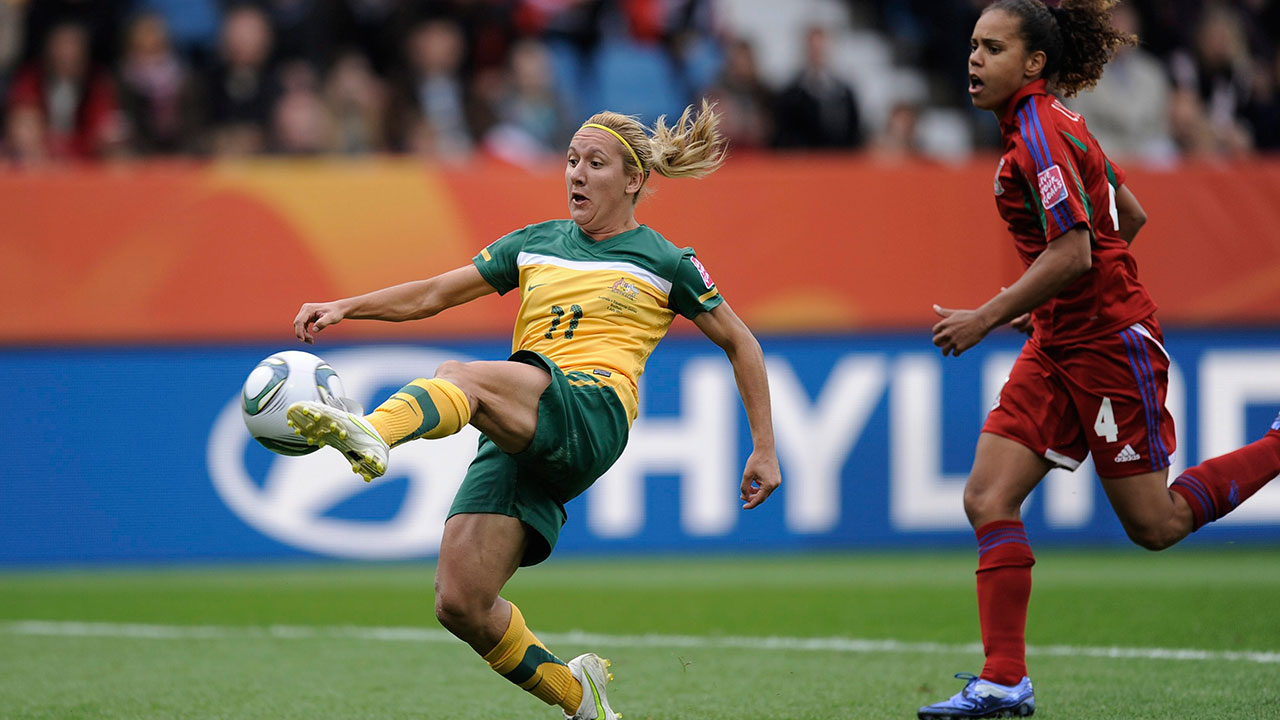In 2006, Australia pulled a nifty trick of soccer geography moving from the Oceania Football Confederation to the stronger Asian Football Confederation. The move made World Cup qualification way harder—see how easy New Zealand’s road to Canada was—but also made Australia better. In an out-at-the-group-stage-slump in their first three World Cups, the newly challenged Matildas (heck of a team nickname, by the way) have been reaching the quarterfinals since. Their hopes of bettering that are slim this time out, as they’ve been drawn into the toughest group.
World Cup team profiles: To read in-depth profiles of all 24 teams at the 2015 FIFA Women’s World Cup, CLICK HERE
Roster
Goalkeepers: Lydia Williams, Melissa Barbieri and Mackenzie Arnold
Defenders: Clare Polkinghorne, Laura Alleway, Servet Uzunlar, Stephanie Catley and Elise Kellond-Knight
Midfielders: Ashleigh Sykes, Emily van Egmond, Leena Khamis, Tameka Butt, Alanna Kennedy, Teresa Polias, Hayley Raso, Katrina Gorry and Nicola Bolger
Forwards: Larissa Crummer, Caitlin Foord, Lisa De Vanna, Kyah Simon, Samantha Kerr and Michelle Heyman
Coach
Alen Stajcic only took over the Australian women’s team last September, after a stint coaching the women’s Sydney FC W-League side. His guns-blazin’ style has served the team well enough so far—they’ve got seven wins out of 11 games since, with just two losses.
Group D schedule
June 8: vs. United States in Winnipeg
June 12: vs. Nigeria in Winnipeg
June 16: vs. Sweden in Edmonton
How they qualified
The Women’s Asian Cup isn’t exactly a hard slog for a decent side. With a relative dearth of Asian countries fielding women’s teams, only eight competitors contest the tournament, which doubles as World Cup qualifying. Of the eight, the five best make the World Cup. Nevertheless, Australia fared well, drawing World Champions Japan 2-2 in their first match, before going on to beat South Korea in the semis and get edged 1-0 by the avenging Japanese in the final.
Team strengths
In a tough group where they’re not exactly favoured, you’ve gotta love the Aussies’ attitude: “We’re going to take the game to them,” coach Alen Stajcic told reporters after their final friendly before the tournament. “We’re not going to sit back and die wondering.” A strong offence is the best defence, then.
Team weaknesses
See above: if they’re not careful (and even if they are, really) the Matildas are going to leave some spaces open to get hit on the counter attack. The Americans will almost definitely hurt them on the break. So the question becomes whether a very young team—almost all of whom play in Australia’s relatively weak domestic league—can do the very hard work of attacking with vigour and defending with care all at once.
Player to watch
Lisa De Vanna is a veteran presence in a young team that desperately needs on. The Matildas’ captain has pedigree, too, having played in top women’s leagues in Sweden and the U.S. in her career. With a lot of power packed into her five-foot-two frame, she’s got a nose for net (and with 33 goals, she’s got about three times the career goals tally for Australia than her nearest teammate). Regardless of her team’s success, De Vanna is in line for a milestone in Canada: if she plays all three group-stage games, she’ll reach 100 career caps.
Burning question
Will they be the ones to lose out in Group D? It’s the strongest group in the tournament, but only two—possibly three—teams can move on. One has to lose out. At first glance, the Aussies and the Nigerians look like the most likely candidates for an early flight home. The Matildas, however, wouldn’t want another group. “You don’t ever go to a World Cup hoping to play the bad teams,” said defender Sam Kerr. “I think every Aussie loves to be the underdog, so we’re looking forward to it.” Game on.
World Cup history
1991 – Did not qualify
1995 to 2003 – Group stage
2007 – Quarterfinals
2011 – Quarterfinals

